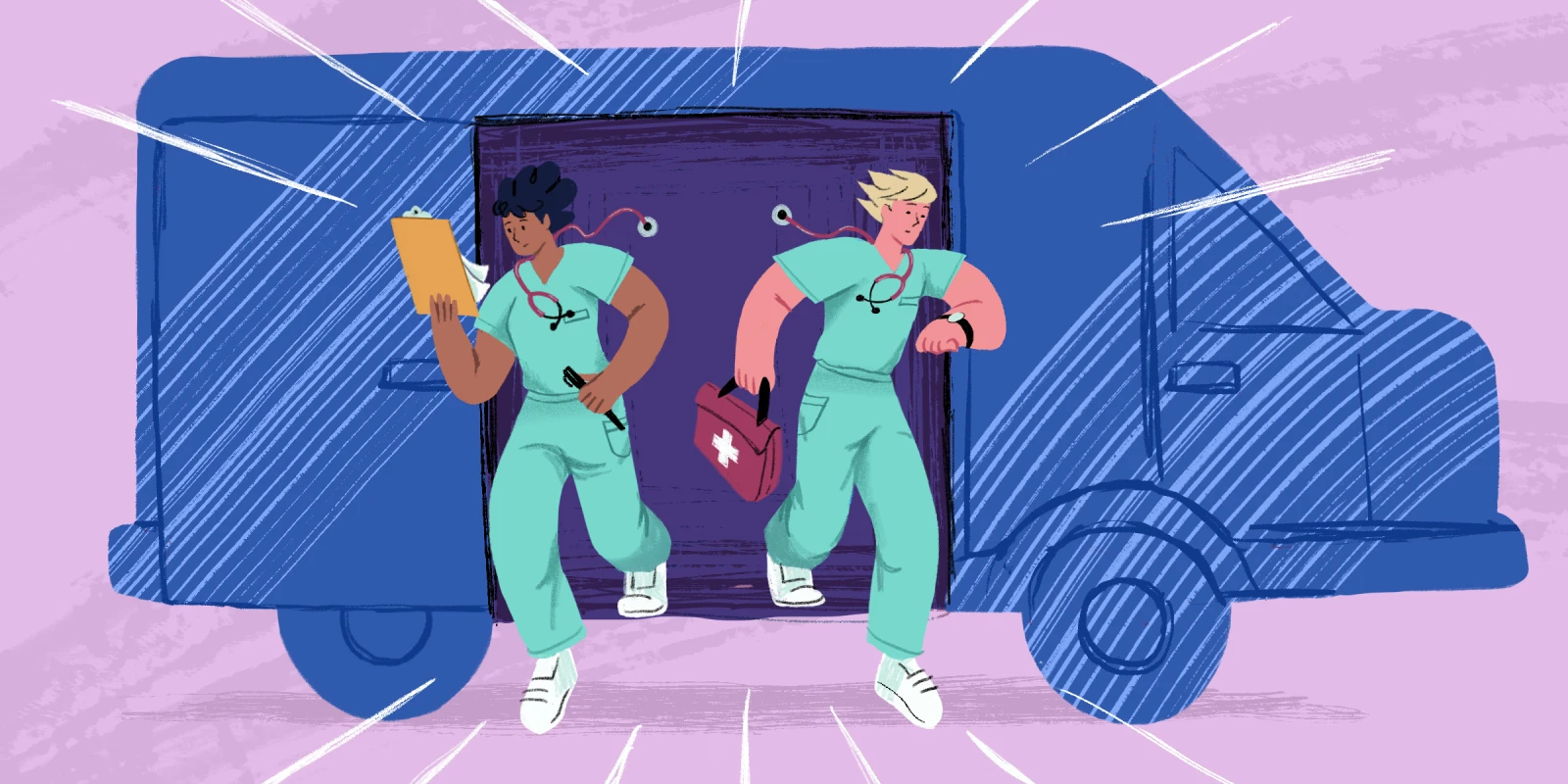We pull into the parking lot at our usual spot on Monday afternoons in the predominantly Black neighborhood of our city. Every week, different people knock on the van’s doors, some familiar and some new. They ask for sandwiches, juices, socks, hand warmers, and other supplies to stay warm and safe in the cold New England winter. Working on the free mobile van clinic, I am part of a team that provides low barrier primary care and substance use disorder care to those who would otherwise not seek services. Sometimes, people come up to us and discreetly ask: “Do you have any stems?” We hand them our pre-packaged “safer smoking kit” containing an unused glass stem (aka “crack pipe”), wooden push stick, rubber mouth pieces, lip balm, copper wool, and alcohol swabs. This kit protects users from cuts and burns, which minimizes the spread of infectious diseases.
Providing these kits is a standard harm reduction technique. Harm reduction is defined as a set of practical strategies and ideas aimed at reducing negative consequences associated with substance use without requiring complete abstinence. It is rooted in autonomy, radical acceptance, compassion, and most of all, love.
Recently, the Biden administration proposed an $11.2 billion budget for fiscal year 2022 for the HSS to execute their Overdose Prevention Strategy in response to the rising rates of drug-related overdose deaths. Through the Harm Reduction Grant Program, the administration plans on funding evidence-based tools such as fentanyl test strips, syringe service programs (with access to unused needles), and intranasal naloxone (an opioid overdose reversal agent). Notably, the grant never explicitly stated that money would or would not go to glass stems, although safer smoking kits often include them.
Nevertheless, in February 2022, clash over whether the federal government would fund so-called “crack pipes” caused an uproar, leading White House officials to explicitly state that tax dollars would not be funding glass stems. As a specialist in addiction, this is alarming to me. Our goal as addiction clinicians is to provide sterile supplies to prevent the spread of infection or injury to people who use drugs (PWUD) — regardless of what the supplies are. Numerous studies show that distributing unused needles and pipes reduces the spread of bloodborne pathogens such as HIV and hepatitis C. Furthermore, not only do these negative reactions harm and stigmatize PWUD, they also perpetuate racism.
Inflammatory responses to terminology like “crack pipes” are a lingering product of propaganda used during the 1970s war on drugs, which leveraged racist images of “crack babies” born to unmarried Black women using cocaine. At that time, intense news coverage and legislators’ responses created a moral panic around cocaine use similar to the one we are observing today around crack pipes. Back then, it was thought that crack cocaine was “more addictive” than powder and associated with violent crime (assumptions which were later disproven), which led to a 100-to-1 crack versus powder cocaine sentencing disparity under the Anti-Drug Abuse Act of 1986. Due to racist associations of violence with Black people, the trope of “crackheads” as only people who are Black proliferated, even though most crack users were and still are white.
These drug policies are reflections of structural racism, where Black folks are criminalized and punished for using the cheaper form of cocaine (powder is more expensive than crack cocaine). In 2009, 80% of those sentenced were Black, while only 10% were white and 10% were Hispanic, despite equal rates of cocaine use among these groups. The Fair Sentencing Act was then established in 2010 under President Obama, which reduced the ratio from 100:1 to 18:1. This disparity that still exists points to racial bias and contributes to the disproportionate policing, sentencing, and incarceration of Black Americans for cocaine and other drug offenses.
Excluding “crack pipes” and other safer use supplies like needles from being funded is counter to what addiction medicine has shown us to be useful. Contrary to its nickname, a glass stem can be used to smoke fentanyl (a synthetic opioid that is commonly found in the drug supply) and methamphetamines, and is not exclusive to crack cocaine. Many PWUD use multiple types of substances (also known as “polysubstance use”) through multiple routes of administration, so those who need unused syringes also need unused glass stems. Smoking and inhaling drugs is a safer route of drug use compared to IV injection, since it has lower risks of infection and accidental overdose. Academic literature on the topic of differences in route of drug administration by race is sparse, but personal experience from my work on the mobile van and anecdotal evidence from other harm reduction workers and addiction medicine specialists suggests that PWUD who identify as Black are less likely to inject and more likely to inhale or insufflate their drug of choice. It can be concluded, then, that the exclusionary practice of diverting funds away from safer smoking kits is racist.
I believe that instead of demonizing Black PWUD, we should be tailoring our overdose prevention strategies specifically to them. After all, contrary to popular belief, the overdose epidemic in America is not solely the domain of white communities — the crisis in Black and brown communities actually began decades earlier, and overdose death rates in Black and Indigenous Americans are currently rising while the opposite is true for white Americans. Evoking racist imagery around “crack pipes” to reduce funding for harm reduction is a dangerous mistake.
We offer harm reduction tools, including safer smoking kits and safer injection kits, to make drug use less risky. Distributing these kits also connects PWUD with health services that they would otherwise not access. People initially come to our mobile clinic knowing that they have access to these kits; over time, this compassionate approach gives us the opportunity to establish rapport with them and help them with additional health care needs. I am there for them when they are ready to discuss reducing or stopping their substance use and when they are ready to seek medical care.
Harm reduction for drug use is akin to offering condoms to reduce STIs and undesired pregnancies for people who have sex. Handing out sterile equipment does not enable drug use; rather, it allows for safer use. Removing access to sterile equipment does not stop people from using drugs, just like removing access to condoms does not stop people from having sex. It only increases risk. Harm reduction enables PWUD to live healthier, safer, and more connected lives. I implore clinicians to speak out against the Biden administration’s handling of this issue, and to take the time to reflect on how to provide culturally relevant and racially equitable harm reduction care to PWUD in their communities.
How do you provide compassionate care for your patients with substance use disorders? Share your experiences in the comments below.
Sunny Kung is an addiction medicine fellow at Massachusetts General Hospital. She completed her internal medicine residency at Brigham and Women's Hospital and medical school at the Pritzker School of Medicine University of Chicago. Originally from California, she is a Taiwanese first-generation immigrant interested in caring for minoritized populations, immigrants, patients with substance use disorders, and those experiencing homelessness. Sunny is a 2021–2022 Doximity Op-Med Fellow.
Illustration by Diana Connolly







